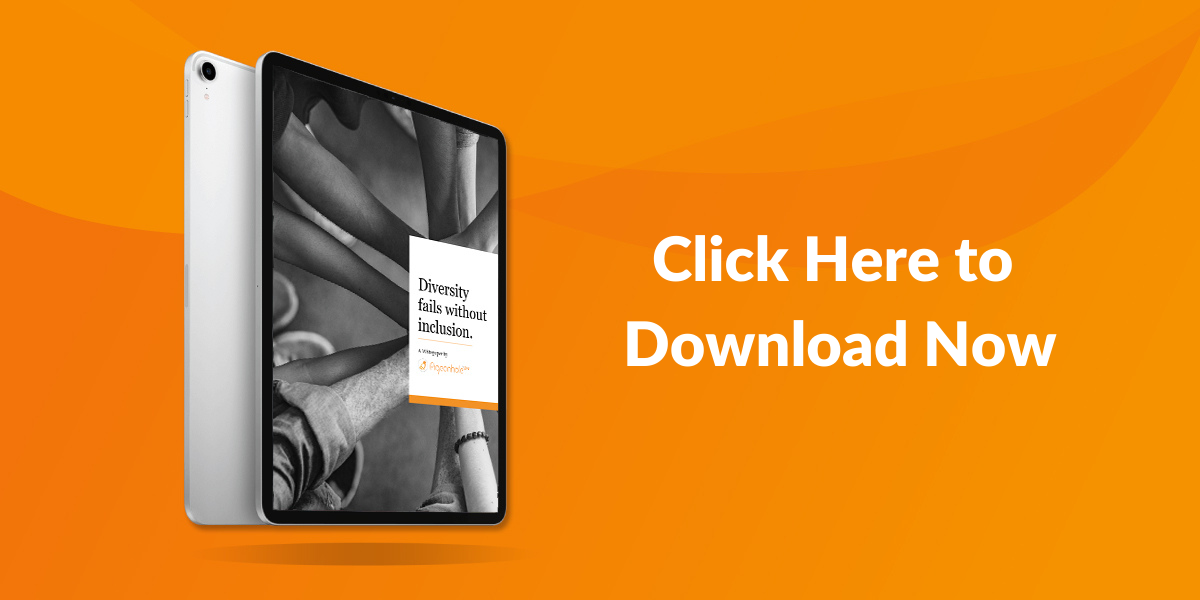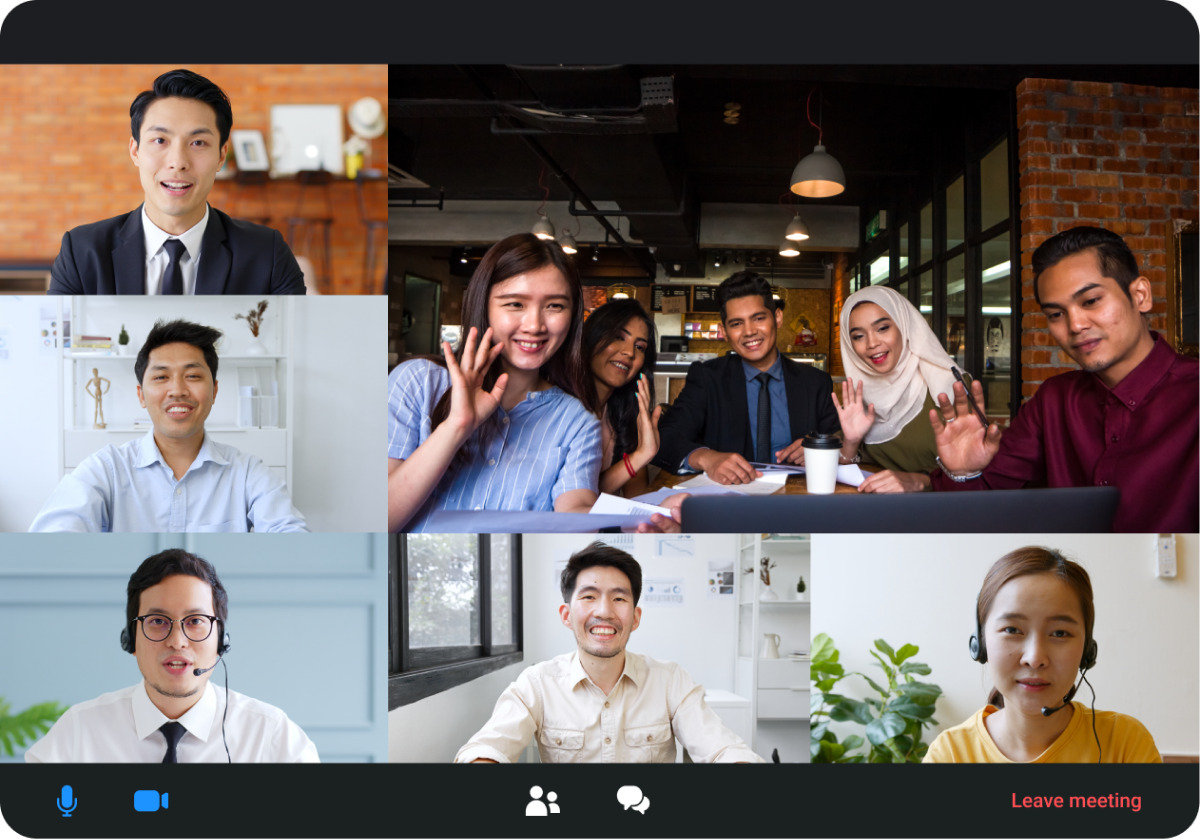How to Support Different Working Styles in Meetings

Melissa Chua
April 12, 2023

Table of Contents
Meetings are the norm in the workplace, but what happens when different working styles clash and derail the meeting's productivity? Add diversity and inclusion to the mix, and the need for support in accommodating different working styles becomes even more critical!
In this article, we'll explore how you can create inclusive meeting environments that support diverse working styles to foster collaboration and productivity.
Create inclusive meetings for diverse work styles
Companies often talk about diversity in terms of things like age, race, gender, and nationality, but they often forget about other important things like how people work and communicate. If you don't support different styles of work and communication, you might miss out on the unique strengths of your employees.
Let's illustrate this with an example.
|
Imagine that you have a team of employees who are working on a project. One team member, Sarah, is very analytical and detail-oriented. Another team member, John, is more creative and likes to think outside the box.
During team meetings, Sarah tends to dominate the conversation by presenting spreadsheets and data. John, on the other hand, prefers to express his ideas visually, using pictures and slideshows.
You notice that Sarah and John aren't communicating well during meetings, and often talk past each other. After discussing with the team members individually, you realize that Sarah is more comfortable with data-driven discussions, while John is more comfortable with brainstorming sessions. To solve the issue, you schedule two separate meetings—one for data-driven discussions, which Sarah will lead, and another for brainstorming sessions, which John will lead.
By accommodating the different working styles of Sarah and John, you can tap into their unique strengths and ensure that everyone is contributing fully to the project! |
Ensure inclusion goes beyond diversity
While diversity and inclusion are often lumped together, they are significantly different sides of the same coin:
- Diversity comes from without, based on the traits of the people you hire.
- Inclusion stems from within, based on the organization and the structures it has in place to facilitate equitable interaction.
This means you can raise your diversity profile by hiring people of different races, physical abilities, religious affirmations, or socioeconomic status, but if people still feel marginalized, alienated, or psychologically unsafe in your organization you will never reap the full benefits of a diverse workforce.
This is why we strongly assert that diversity fails without inclusion. It's time for another example!
|
Let's say that your company prides itself on being diverse and inclusive. You have a workforce made up of individuals from various racial and ethnic backgrounds, as well as individuals with different physical abilities, gender identities, and socioeconomic statuses.
You also have a diversity committee that works to promote awareness and inclusion in the workplace. However, despite your efforts to increase diversity, some employees still feel marginalized and excluded!
For example, your company's policies and practices may not accommodate the needs of employees with disabilities, such as a lack of accessible restrooms or conference rooms. Additionally, certain cultural or religious holidays may not be recognized, which can make employees feel like their beliefs and values are not respected.
Because of these issues, employees may not feel fully included in your company culture, which can lead to disengagement, low morale, and high turnover.
For your company to truly reap the benefits of a diverse workforce, you must not only focus on diversity, but also on creating an inclusive environment where all employees feel valued, respected, and supported. This may involve installing "barrier-free" accessibility upgrades and providing training on cultural awareness and sensitivity.
|
Identify different working styles in the workplace
Carson Tate, the productivity consultant and author, has identified four distinct working styles that can help you understand your own work preferences and optimize your productivity. Understanding these styles can also help in communication and collaboration with colleagues who have different styles. Tate's four working styles are:
- Prioritizers prefer to work on tasks that are important and urgent. They like to work with clear deadlines and schedules and tend to focus on the outcome rather than the process. Paula, for example, would likely tackle a client report that's due in two days before starting work on a long-term project with a less pressing deadline.
- Planners like to have a clear plan or structure before beginning a task. They like to outline the steps and timeline for a project and tend to focus on the process rather than the outcome. Peter, for instance, insists on creating a detailed project plan with deadlines and milestones before starting work on a new project.
- Arrangers want to have a balance between structure and flexibility. They like to have a framework or outline for a task, but are comfortable adjusting and adapting as needed. Angela, for example, likes to have a general plan for a team project but will be open to adjusting it based on team members' feedback and input.
- Visualizers choose to work on tasks that allow for creativity and imagination. They like to see the big picture and tend to focus on the outcome rather than the process. Vincent, for instance, would rather spend his time brainstorming the company's new branding strategy instead of manually updating a spreadsheet.
By identifying different working styles beforehand, a team composed of a prioritizer, planner, arranger, and visualizer can work together by leveraging their strengths and finding a balance between urgency, structure, flexibility, and creativity to achieve the best outcome for the project. Here's how:
|
After identifying their different working styles, our dream team could work together like this:
Together, they are all able to leverage their unique strengths and work styles to produce a high-quality project that meets both their individual and team goals!
|
Promote different working styles in the workplace
A practical approach to supporting different work styles in the workplace is to encourage everyone, from managers to employees, to create their own personal user manuals. These manuals outline their preferred methods of working and communication, helping to promote a more inclusive and collaborative workplace.
Our whitepaper, Diversity Fails Without Inclusion, provides a user manual template that can help kickstart your efforts, containing information such as:
- My working style
- What frustrates me
- How to best communicate with me
- How I like to be appreciated
Sharing different working styles can create collaborative work environments. Team members can understand and appreciate each other's strengths and challenges, leading to honest conversations about personal preferences, work styles, and anxieties. This ultimately builds trust and a stronger sense of teamwork within the group.
The next step is to ensure that each working style is represented on every project and team, covering each other’s blind spots and providing unique contributions. For example, if a committee has too many prioritizers, it may miss the broader context of why the committee was created in the first place!
Support different communication styles in meetings
Effective workplace communication is essential to establish a positive company culture. Being mindful of how we communicate with our colleagues can significantly impact their sense of inclusion and value. After all, failure to recognize and appreciate diverse communication styles can result in an unproductive and exclusive environment.
Ignoring different communication styles can lead to miscommunication, a costly problem that can set large companies back by $62.4 million a year and smaller businesses by $420,000 a year! How can we prevent this?> Acknowledging and supporting communication differences is critical in preventing such losses.
Meetings are a good starting point to implement inclusive communication practices. They should provide a secure space for diverse individuals to communicate without fear. However, our whitepaper reveals that minorities at work still face difficulties expressing themselves authentically and effectively due to their fear of being stereotyped.
To address this, here are 4 steps to create a more inclusive meeting environment:
1. Share agendas before the meeting
An agenda can ease anxieties by providing attendees with a clear understanding of how to prepare and what to expect. This approach is particularly beneficial for introverts on the team who prefer to consider ideas before sharing them.
For example, before the annual strategy meeting, Peter created an online agenda using Pigeonhole Live and shared it, which helped the introverted team members gather their thoughts beforehand and led to a more productive discussion during the meeting.
2. Establish inclusive meeting guidelines
To ensure productive meetings, basic rules such as assigning clear responsibilities for agenda items, strictly enforcing a "no interruptions" policy, acknowledging valuable contributions, preventing hijacking, and avoiding domination by certain individuals, must be put in place.
During a quarterly sales meeting, for instance, Paula's sales team used Pigeonhole Live's Q&A feature to ask questions and provide feedback to the speaker, while the agenda feature helped her assign team members for each topic, ensuring that no one was able to dominate the discussion and that all viewpoints were heard.
3. Enable anonymous contributions
Allowing anonymous feedback can shift the focus from the person asking the question to the question itself, which is particularly useful for employees who are worried about being judged for their inquiries and prevents more outspoken individuals from monopolizing the conversation.
For example, during a town hall meeting on employee benefits and compensation, Angela's HR team utilized Pigeonhole Live's anonymous Q&A feature to foster an open and honest dialogue among employees without the fear of judgment or retaliation. This ensured that everyone had a chance to participate and share their thoughts.
4. Designate a critical thinker
In any meeting, it's important to avoid groupthink, which can stifle creativity and hinder progress. A Devil's Advocate can help to encourage people to challenge ideas and express disagreement in a safe and non-judgmental environment. This approach can lead to better outcomes and more effective decision-making.
For instance, in Vincent's team meeting utilizing Pigeonhole Live for brainstorming, the facilitator designated a Devil's Advocate to promote dissenting viewpoints, while the team used the anonymous Q&A feature to ensure that participants could express disagreements without fear of being judged or penalized.
Embrace diversity for productive and inclusive meetings
So, let's avoid turning your meetings into a marathon of never-ending chaos and frustration! Remember to always respect and value diverse working styles, and your meetings will not only be more productive, but also more enjoyable. Who knows, maybe you'll even start looking forward to them (just don't get too carried away)!
Download our whitepaper, Diversity Fails Without Inclusion, for more actionable insights on how to build inclusiveness frameworks in your organization.
| Note: This article was initially published in 2020 and has since been revised with fresh insights and statistics. |
Download our ebook to uncover more ways to apply the two-way conversation approach in your town halls.

